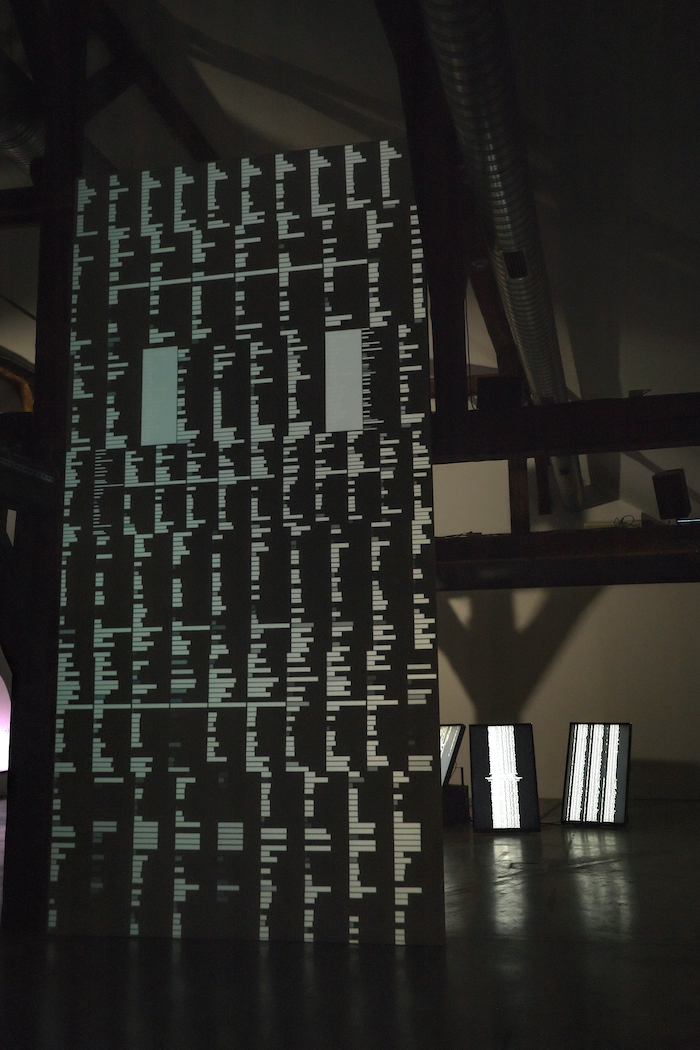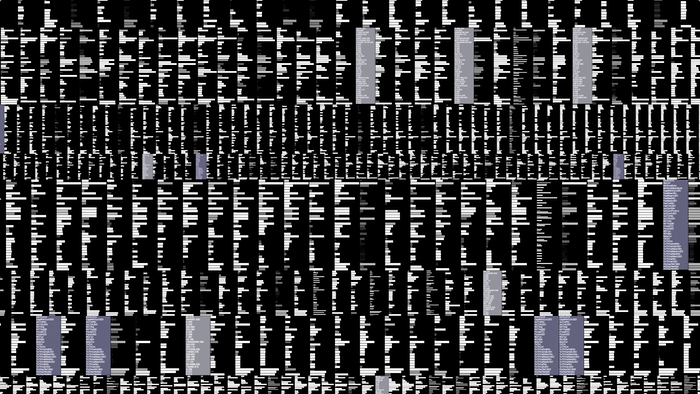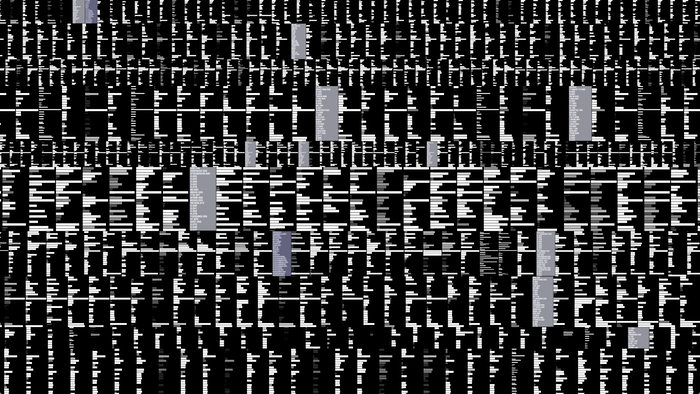|
Aleastock 2 Aleastock 2 @ WRO Art Center (as a part of the Point Nemo solo show), 2020 Aleastock 2 [screencast]
Cryptocurrencies and their environment are a good field for transdisciplinary and unorthodox research and experiments on topics that somehow resonate strongly with current post-technological updates and their determinants: obscured layers of the system, big data, greed studies (especially in the context of a climate catastrophe and taking into account the energy expenditure needed to support the cryptocurrency circulation), autonymization of intelligent information processing systems enabling behavior prediction or rendering. The work processes massive amount of data in real time and presents it in the same - massive - way. It overloads the senses of the recipient by emitting audio and visual information in quantity and dynamics causing phenomena occurring when touching perceptual boundaries. Hypnagogic patterns allow the assimilation of relationships between data in an intuitive way - some regularities in the data can only be observed by using such a method (maybe recalling old, but still "high touch" category introduced by John Naisbitt in late nineties would be reasonable here). A reference to aleatoricism that appears in the name of the work applies to both musical and visual components. In the general consciousness, the term is most associated with musical ideas developed by Pierre L. J. Boulez, but it is also used in other contexts, e.g. in architecture (Sean Keller and Heinrich Jaeger created the term "aleatory architecture"). In "Aleastock 2", aleatoricism appears in meaning which was proposed by composer Witold Lutosławski - he uses the term "controlled aleatoricism" to describe introduction of mechanisms (among others: removing divisions between measures) at the score level to disturb - in practice in a similar way to the Reich's phase shift - the time synchronization of events in selected places of musical composition. In "Aleastock 2" graphical representation of sonificated data maintains a reference to time in the horizontal coordinate axis (in other words: it's a timeline) - and thanks to this, it allows not so much the use of similar procedures as described above, but it causes that similar mechanisms occur naturally due to the very nature of the data being processed (the same applies to the polymetric rhythmic structure of the work). The visual perceptual effect of experiencing "Aleastock 2" brings references to op art. Flat data patters transform into spatial structures - this is obviously an optical illusion, which in this particular case allows intuitive capture of relationships in a large set of data. It is worth mentioning here that optical illusions - used extensively in op art - have recently gained a new field of application: they serve cryptography to protect information from being taken over by non-human entities, especially intelligent agents scanning the global space of information exchange: optical illusions (typically based on various specific features of the human visual perception apparatus that are usually ignored in digital models) are often illegible to AI-based or similar pattern-recognition systems. Aleastock 2 is the successor and continuation of the concept initiated in the Aleastock interactive installation created in - taking on the stock market data on companies in the technology sector. The premiere of the "Aleastock" took place during the "Field of Vision" – "Field of Hearing" / Lutoslawski Festival at Centre of Contemporary Art "Znaki Czasu" (Toruń / Poland / Nov 15-17 2013) and was curated by Krzysztof Białowicz. * * * Video documentation from the Point Nemo by Mira Boczniowicz courtesy of the WRO Art Center.
|
 Point Nemo on the WRO Art Center website
Point Nemo on the WRO Art Center website Aleastock interactive, stock-driven installation (2013)
Aleastock interactive, stock-driven installation (2013) "Aleastock 2" by Paweł Janicki is an interpassive computational installation endlessly looking for convergence and significant patterns in exchange rate data and transactions in global cryptocurrency trading markets.
"Aleastock 2" by Paweł Janicki is an interpassive computational installation endlessly looking for convergence and significant patterns in exchange rate data and transactions in global cryptocurrency trading markets. 



